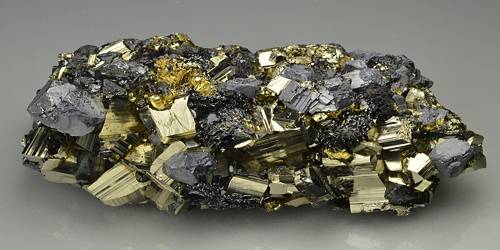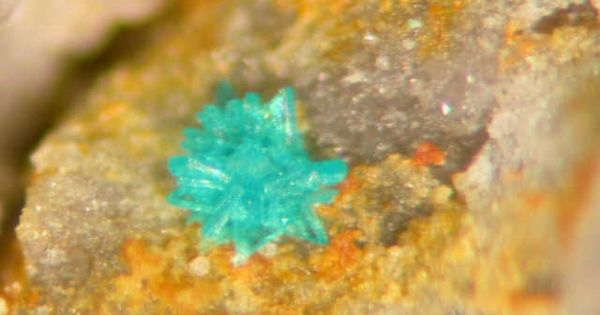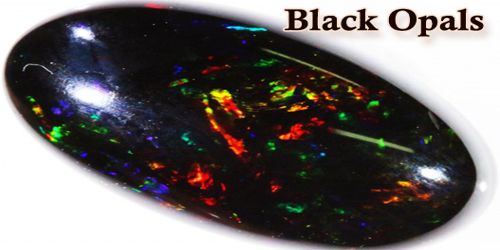Liebigite is a uranium carbonate mineral with the chemical formula: Ca2(UO2)(CO3)3·11H2O. It is an apple-green mineral consisting of hydrous uranium calcium carbonate and occurring as concretions or coatings. It is a secondary mineral occurring in the oxidizing zone of uranium-bearing ores. Liebigite only forms secondarily by alteration of rocks having other uranium minerals (such as uraninite) and carbonates.
It was first described in 1848 for an occurrence in Adrianople, Edirne Province, Marmara Region, Turkey. It was named for German chemist Justus von Liebig (1803–1873).
General Information
- Category: Carbonate mineral
- Formula: Ca2(UO2)(CO3)311H2O
- Crystal system: Orthorhombic
- Crystal class: Pyramidal (mm2) (same H-M symbol)
- Colour: Green to yellowish-green
Properties
Liebigite is an orthorhombic-pyramidal mineral containing calcium, carbon, hydrogen, oxygen, and uranium. It is green to yellow-green in color. It has a Mohs hardness of about 3. Liebigite, like some other uranium minerals, is fluorescent under UV light and is also translucent. It crystallizes in the orthorhombic system, but only rarely forms distinct crystals. It typically forms encrustations or granular aggregates.
- Crystal habit: Rare as short prismatic crystals; scaly or granular, in aggregates, and films
- Cleavage: Distinct on {100}
- Tenacity: Brittle
- Mohs scale hardness: 2.5 – 3
- Luster: Vitreous, pearly
- Diaphaneity: Transparent, translucent
- Specific gravity: 2.41
- Optical properties: Biaxial (+)
Liebigite is radioactive and will fluoresce a strong green to blue-green under both short-and long-wave ultraviolet light.
Occurrences
Liebigite is an uncommon mineral that occurs as an alteration product of uraninite in alkaline carbonatite solutions. It can be found in localities in Turkey, the Czech Republic, Germany, Poland, England, Scotland, France, the USA, Canada, Japan, and the Democratic Republic of the Congo, among others.
Information Source:















